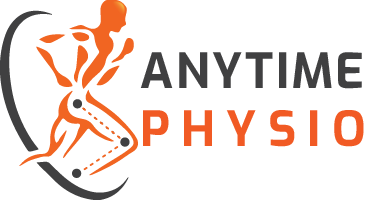Physiotherapy Treatment & Exercises for Shoulder Bursitis
What is Shoulder Bursitis?
Shoulder bursitis, or subacromial/subdeltoid bursitis, is a painful condition that causes pain and limited range of motion of the shoulder. Bursitis is inflammation of a bursa – a tiny, fluid-filled sac that assists in minimizing friction at a point of friction between a bone and the surrounding soft tissue. Shoulder bursitis is often associated with shoulder impingement, a movement dysfunction involving the glenohumeral joint (shoulder) and the scapula (shoulder blade).

What are the Symptoms of Subacromial Bursitis?
Shoulder bursitis usually presents with these symptoms:
- Pain at the tip of the shoulder
- Pain that occasionally radiates into the upper arm
- Painful arc of movement, usually when reaching up or to the side
- Minimal pain when the arm is down by your side
- Shoulder pain with activities such as reaching up to a high shelf, washing and drying hair and putting a bra on
What Causes Pain in Shoulder Bursitis?
The pain of bursitis can be attributed to the irritation, inflammation and sensitization of the bursae in the shoulder. This inflammation can be caused by repeated minor trauma to the bursa or a single significant injury such as a fall or sporting injury. Shoulder pain from bursitis can also be caused by reactive spasm in the surrounding shoulder muscles. These may include the rotator cuff muscles (the internal and external rotators of the shoulder) as well as the upper trapezius muscle, levator scapulae muscle and pectoralis minor muscle.
Will I Recover From Bursitis?
Most people recover well within 6-8 weeks of following a guided exercise program and activity-modification advice given by a physiotherapist or doctor. In some cases, medical management of bursitis may be required and can involve oral anti-inflammatory medications or the injection of cortisone (a corticosteroid anti-inflammatory) into the shoulder.
In a small percentage of people, surgery may be required to decompress the subacromial space. In this case, shoulder bursitis may be caused by an anatomical variation that causes the subacromial space to be smaller naturally, resulting in more frequent impingement and difficulty avoiding irritation of the subacromial structures. An x-ray of the shoulder is used to diagnose this anatomical variation (called a hooked acromion).
How Do I Fix Shoulder Bursitis?
Treatment for shoulder bursitis is multifaceted. Your physiotherapist will help you to identify the activities and movements that may be contributing to the irritation of the bursa and modify these activities to limit this irritation. Sustained postures for work and leisure can lead to tightness or weakness of certain muscles around the shoulder, scapulae, neck and upper back. Your physio will thoroughly examine the movement of your shoulder, neck and upper back, the muscle strength as well as the tightness of the muscles around the shoulder to determine the best course of treatment for your shoulder bursitis. This treatment will usually involve a combination of massage, stretches and motor control exercises to treat the underlying cause of your bursitis.
What Can I Do To Help My Recovery From Bursitis?
It is important to limit aggravating activities. This may mean taking time off from sports or gym exercises that flare up your shoulder bursitis. It is also important to keep up with your prescribed exercises and stretches. Research has shown that it can take up to 6 weeks for muscles to adapt to a new exercise program, so even if you don’t feel like there is much change initially, keep up with the exercises and you can expect to see the benefit of your hard work.
Need Help With Your Shoulder Pain?
Book an appointment online with one of our expert Brisbane physiotherapists.
